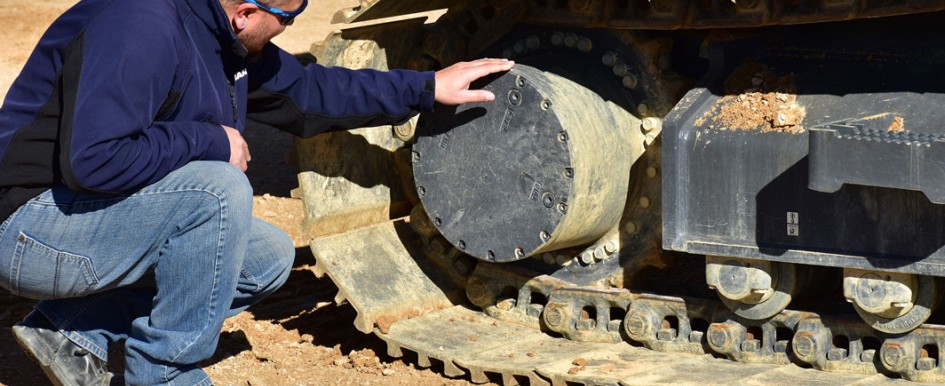
As your construction season winds down and colder weather blows in, now is a good time to think about what needs to be done to your heavy construction equipment, such as excavators, wheel loaders and articulated dump trucks, before winter arrives—especially if you are located in the northern region of the United States or in Canada, and your equipment won’t be used until after the ground thaws.
To ensure reliable operation once it returns to service, your equipment will require storage, as well as preparation and maintenance before and after storage. Consider the following tips to help you prevent your equipment from damage due to winter weather this year.
1. Prep for Storage
First, complete pre-storage preparation tasks as listed in your machine’s operation and maintenance manual. Review the manual for recommended intervals and a checklist of winter maintenance items, as well as oil and fluid recommendations. It’s always a good idea for you and your operators to request maintenance training and assistance with proper techniques from your local equipment dealer. Familiarize yourself with decals and key maintenance points before winter hits. Thoroughly clean the machine of grease and debris, including the engine compartment. If you are storing your excavator, clean out the undercarriage as well. All machine components should be properly lubricated, and exposed cylinder rods should be greased to reduce rust and moisture while in storage. In addition, be sure to clean the machine’s cab. Some equipment manufacturers offer an optional on-board air compressor to easily remove dust and debris. Remember to throw away trash to declutter the cab before spring.
After the machine has been cleaned, look for signs of obvious machine damage and replace any worn or damaged parts. Document the items that will need attention prior to spring. Check the cab door and window seals to ensure there are no leaks or cracks. Install a new windshield wiper blade and add low-temperature washer fluid. Replace any burnt-out bulbs to ensure your operators have the appropriate lighting.
2. Check Fuel, Oils & Filters
If you are getting close to your next preventive maintenance schedule, replace hydraulic fluids, fuel and filters before storing your equipment, referring to your operation manual for fluid level requirements. When you are filling fluids, leave room for expansion, especially for machines with diesel exhaust fluid (DEF). In very cold temperatures, DEF can freeze, causing the volume to increase. Though machine reservoirs are designed to accommodate, you should keep bulk DEF in heated storage. Purity and concentration are critical with DEF and can be affected by temperature, so work with your local dealer to better understand how to store and handle this fluid.
Before storage, place a fuel stabilizer in the fuel tank and run the engine for a few minutes to circulate the liquid to the pump and fuel injectors. If there is a possibility you will take the machine out of storage before winter, add the appropriate gel-additive to the fuel. In addition, drain water from the water separator on your machine, and then, fill the fuel tank at the end of your last shift. Condensation in the fuel tank can cause start-up issues at the beginning of spring. Lastly, inspect the air filtration system and use the correct replacement filter to reduce the risk of premature
engine failure.
3. Disconnect the Battery
Always disconnect the battery and store it in a cool, dry place above 32 degrees Fahrenheit to reduce the potential for battery discharge. For batteries that need to be charged periodically, a trickle charger can be connected to help maintain the voltage at a slower rate, improving the battery life. Battery connections should also be inspected and cleaned at this time, as corroded terminals can cause hard starting and charging issues.
4. Protect it from the Elements
If you are not able to keep equipment inside (preferably in an enclosed, heated facility), park the machines in a dry, protected shelter, out of the wind and direct sunlight. If possible, cover the equipment with a tarp to block moisture and prevent snow buildup. When you start your equipment again, use a block heater to assist starting the engine and let it run until it gets up to the working temperature, which helps prevent the valves from sticking and distributes oil where it is needed.
5. Prep & Lower Attachments
Perform visual checks of attachment components, including hydraulic hoses, cylinders, guards, cutting edges and teeth, for damage before storage. Attachments should be stored inside, out of the elements. When ready to store, lower them to the ground. If you have an excavator, the blade, if equipped, should also be fully lowered to the ground’s surface. Once those steps have been completed, tag the machine to indicate it is ready for storage.



